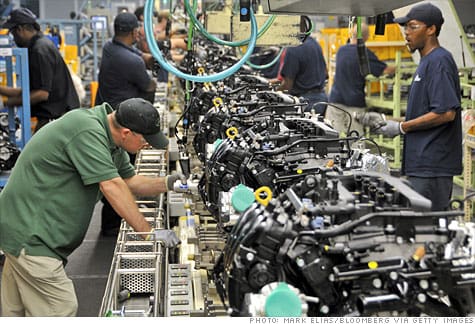)
The first month of 2017 is over, and key factors in judging the health of the economy are trending in a positive direction. US Factory output has officially surpassed a two year monthly high in January amid sustained gains in new orders and raw materials costs, indicating domestic demand is on the rise. Additionally, according to recent data, private sector corporations appear to be currently hiring. Even though the construction industry suffered minor setbacks in December, the underlying trend still appears to be pointing upwards and analysts believe momentum in the economy is picking up in the right direction.
The US central bank, the Federal Reserve, is expected to raise its rates three times for the year, the only question being the timing on when the hikes will occur. Per the Institute of Supply Management, the index of national factory activity is currently up 1.5%, the maximum since late 2004 when the oil market began its turmoil. Manufacturing, which accounts for about 12% of the overall American economy, has been rising likely in part because of Donald Trump’s focus on reviving the industry throughout his campaign. Trump has gone on record on multiple occasions promising to slash taxes and regulations to raise profit margins on operations here in America and encourage them to put Americans back to work.
Many top executives throughout the industry are booming with confidence right now as they describe demand to be very steady and exceeding expectations. Manufacturing indicators are pointing towards new orders being on the rise, currently surpassing multi-year highs. A very strong indicator of factory employment spiked 3.3% to its highest level since mid-2014, hinting that the nonfarm payroll report could show more gains in manufacturing for the second straight month. With President Trump actively calling out companies attempting to ship jobs overseas this trend is not likely to reverse any time soon.
However, raw material costs have also been on the rise, so manufacturers are also beginning to feel the sting of inflation – meaning the federal reserve could be raising interest rates at exactly the right time to prevent inflation from spinning out of control. That marks the 11st straight monthly increase, meaning manufacturers will likely welcome the Fed’s rate hikes, ultimately resulting in the 2% interest rate target for the end of the year. The collapse in oil prices in 2015 and the strengthening dollar combined to hurt manufacturing much of last year, so the significant oil rebound is likely a contributing factor to the manufacturing recovery.
According to a government report released on Friday, the sector saw in increase on equipment spending over the fourth quarter of last year, making it the only quarter that it saw growth last year. The ADP National Employment Report released a report today showing private employers adding 246,000 jobs in January, up by roughly 100,000 from the month before. Though it is not as comprehensive as the nonfarm payroll report (due to be released in a few days) to reflect accurate job growth, it is yet another indicator the economy is trending in the right direction.

